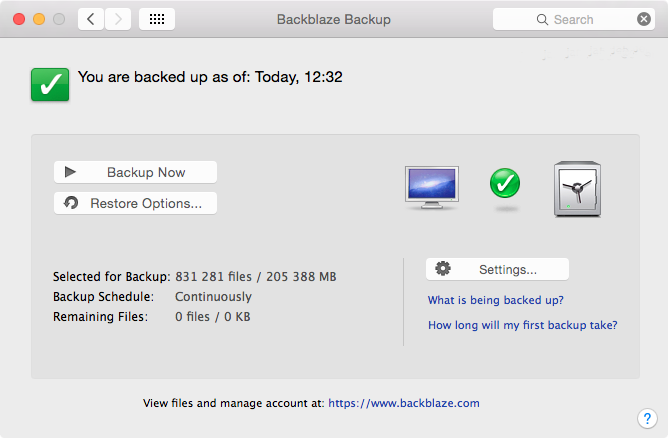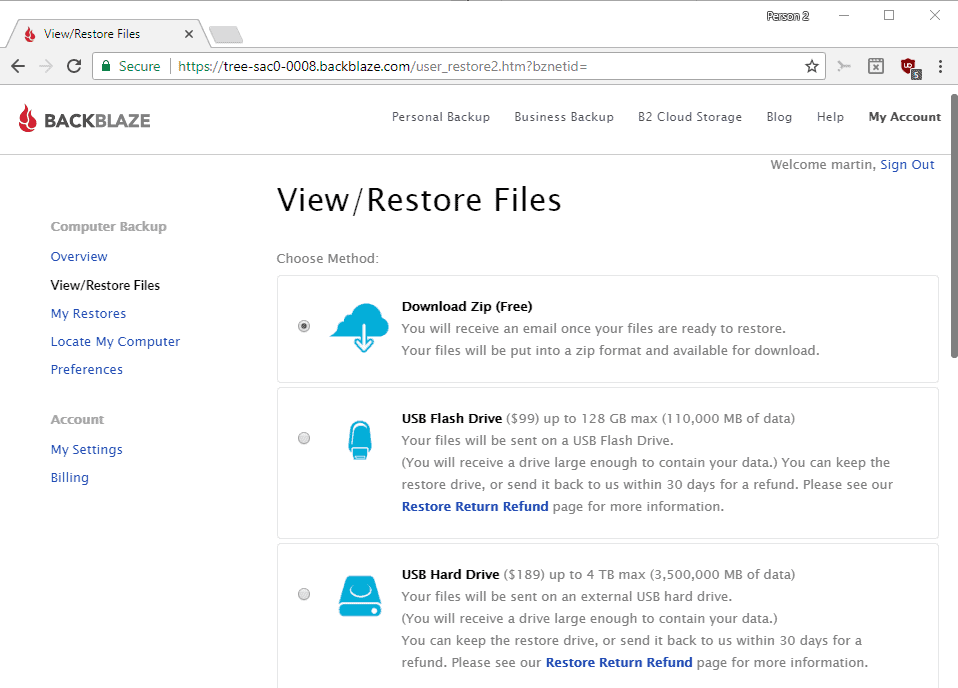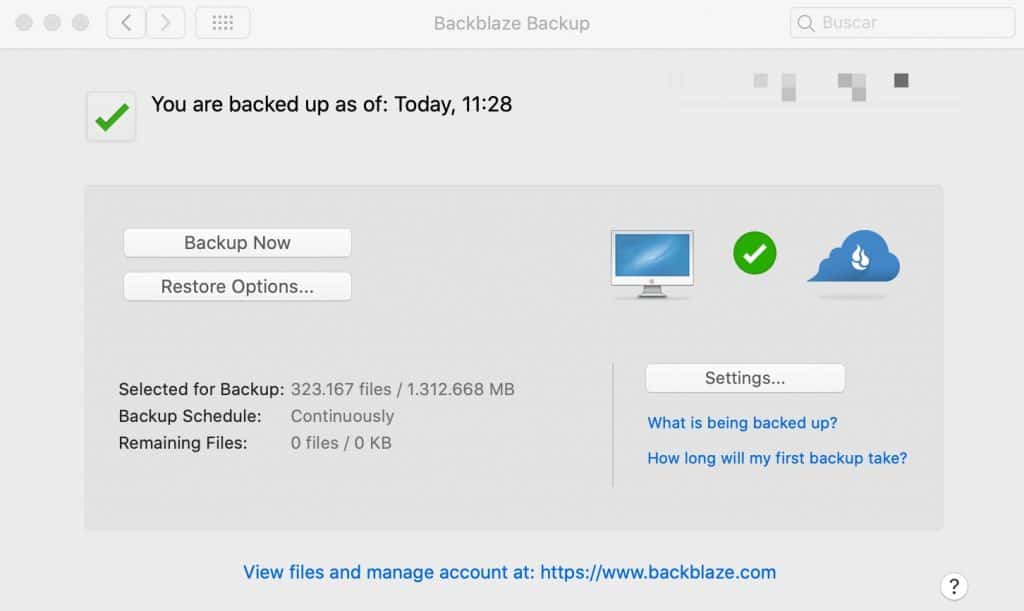
The upload transfer speed depends on numerous factors. In fact, if you run a fairly modern PC, you probably never know that the client is running or transferring files as it has little impact on the device's resources. The Backblaze client on Windows uses a light footprint, and transfers don't tax computer resources by much either. If you don't want a folder and its content to be synced, this is the place to add it before you start the first transfer of data. You may remove these restrictions under Preferences > Exclusions, or add new restrictions. Backblaze's client won't transfer files inside the program files or windows folder for instance, or ISO, EXE or MSI file types. Note: The list of folder and file type exclusions is large. Future backup jobs only transfer changed or new files, and will complete faster because of that. The first backup may take a long time as most files that are on the computer are transferred to Backblaze. It is not an overly accurate estimate though. There you find an estimate on the Gigabytes that the client will transfer per day which seems to be based on that. You can check the last file transfer speed under Settings > Performance. The software does not display transfer speeds or an estimation of the remaining transfer time directly.


This is an automated process that you can pause at any time.

The program lists the files and the total size that it has selected for backup, the remaining files and their size, and the backup status in the interface.


 0 kommentar(er)
0 kommentar(er)
